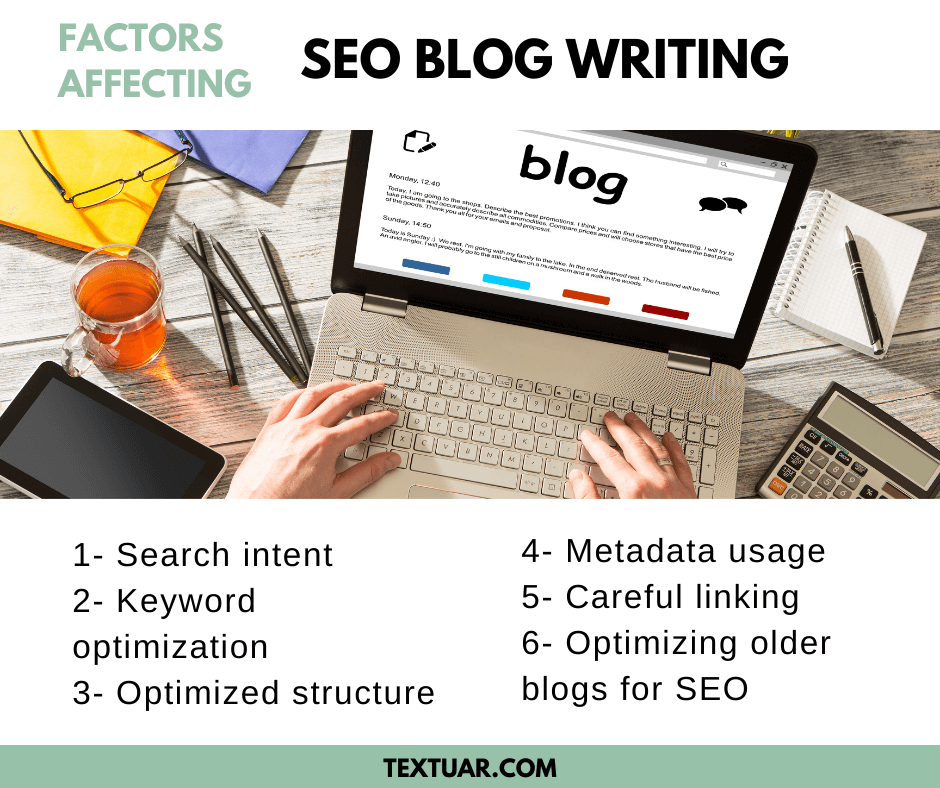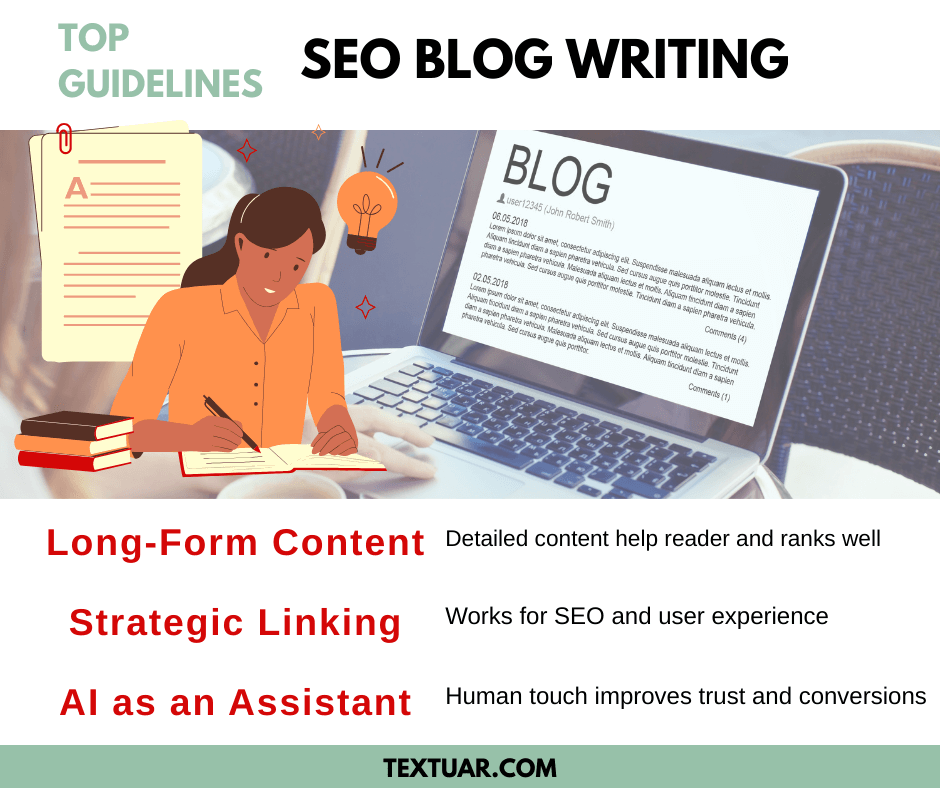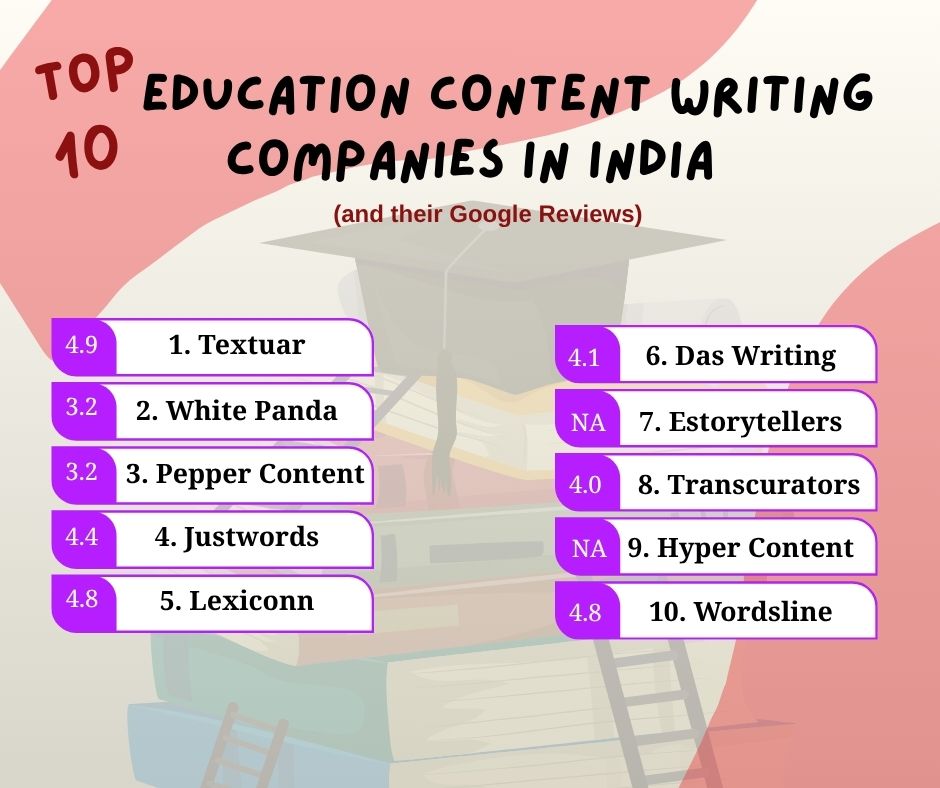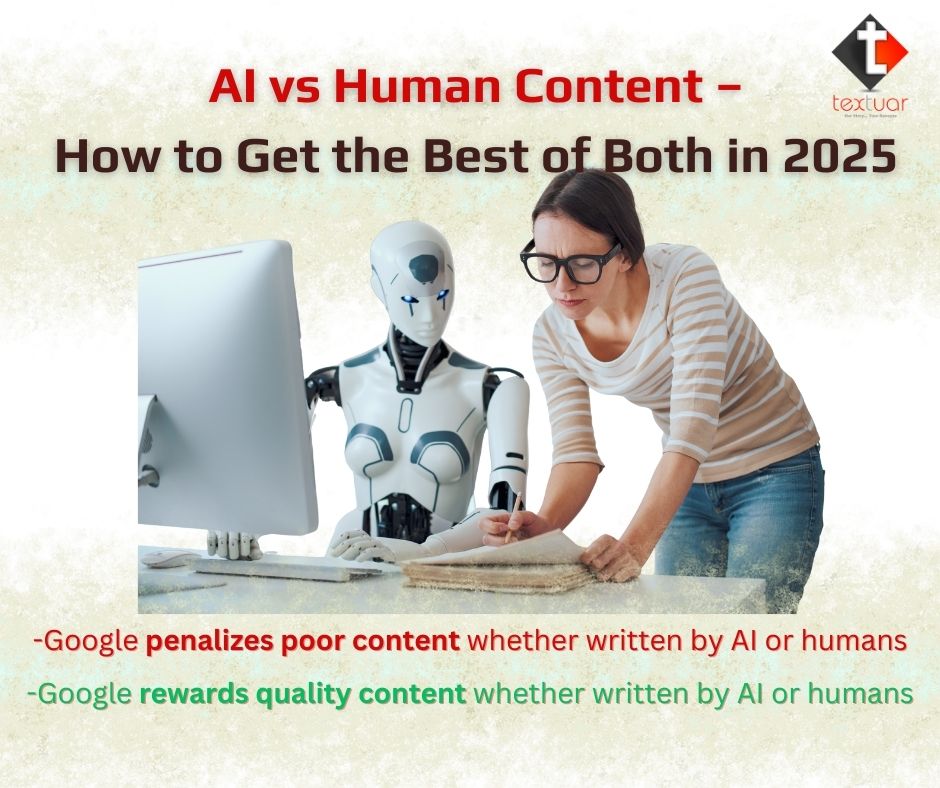Have you ever typed a question into Google and instantly found the perfect answer—one that felt like it was written just for you? That is not merely an accident. Behind every top-ranking blog is a blend of human insight and strategic expertise of what readers truly need.
At Textuar, we don’t just chase algorithms; we create content that solves problems, builds trust, and stands the test of time.
How?
By merging 15+ years of SEO experience in SEO blog writing with a relentless focus on the people behind the searches.
Google algorithm changes 9 times every single day. But one thing remains constant – content crafted for humans (not bots) wins every single time.
With that in mind, let’s explore some expert tips and tricks our content company uses to optimize blogs for search engines—while still keeping them natural and engaging.
Why is SEO blog writing important?
No matter how well-researched, factually correct, and statistically accurate your blog is, without SEO, it is less likely for your content to rank highly on search engines. And we all know that low ranking directly impacts your site’s ability to attract and engage with the target audience. Your content and website may end up getting deemed less credible and authoritative.
Click-through rates or CTR for websites with the number one position on the Search Engine Result Page is 39.8%. This rate drops to 18.7% for the second position and 10.2% for the third position, with the 10th position having only 1.6% CTR. The situation for 2nd page’s results is even worse.
What does this mean?
If your website doesn’t appear on 1st page, there is almost no chance of your brand being found organically. Of course, you may consider advertising your site. But that comes with a price tag and only lasts until you pay. So, why not invest in SEO blog writing? It is free. Also, with the right tricks, your website will be able to bring traffic for much longer than any other tactic would.
What are the factors affecting SEO blog writing?
SEO blog writing is all about optimizing content for search engines without impacting the human reader experience. Besides telling a story or sharing a message, SEO contents improve the site’s visibility, too.
Listed below are the fundamentals of SEO blog writing –
1- Search intent
You cannot just craft content based on what you think your readers might be right. You must align your topics as per user intent. The idea is to craft content that meets the expectations of your target audience. It should perhaps solve some of their biggest problems, too.
Once you get search intent right, you will boost the on-page time of the readers, reducing bounce rates significantly.
2- Keyword optimization
The idea behind SEO blog writing is to show both the search engines and users that your website is an authoritative source of information. Keywords sprinkled throughout the blog allow search engines to determine which topics your website helps with.
Strategically placing relevant keywords across the copy while also maintaining the natural flow is the ultimate goal in SEO blog writing.
3- Optimized structure
Of course, almost all types of blogs, articles, ebooks, etc., follow a certain type of structure. In SEO blog writing, this structure plays a little more importance. Besides improving readability, headings, subheadings, and headers also tell search engines what topic your content discusses and explores.
The content structure also helps search engines understand the hierarchy of your blog.

4- Metadata in SEO blog writing
Writing a blog is not enough. Creating back-end content or metadata is equally important to enable search engines to rank your website.
Both meta descriptions and title tags don’t appear in your main blog. But they are used by search engine bots to base the search engine results.
5- Strategic linking
Standard digital marketing content often overlooks the importance of internal linking. But SEO-focused blog doesn’t. It also prioritizes earning backlinks from credible external sources. This strategy, known as link building, enhances user experience. It also helps search engines identify your content’s quality and relevance.
6- Optimizing older blogs for SEO
There is nothing like a completed evergreen blog post. Every content writer knows that having a content update strategy is critical, given the search engine algorithm updates almost daily. Also, with competitors targeting the same keywords as yours, the search results are never the same.
With a content update strategy in place, you get to maintain the freshness and relevancy of older content on your website. This practice is what we term historical optimization in technical terms.
What are the Top SEO Writing Guidelines We Use for Clients?
Great SEO content isn’t just about keywords. Rather, it is about clarity, relevance, and strategy. Textuar’s proven framework blends data-driven precision with human-first storytelling. The outcome is the creation of blogs that rank and engage.
From deep keyword research to scannable structures, here’s how we ensure your content stands out in the present Google algorithm update, while keeping real readers at the heart of every word.
| Guideline | What We Do | Why It Matters | How We Execute |
| Keyword Research | Identify high-intent keywords. | Targets audience search behavior; improves relevance & rankings. | Use tools like Ahrefs, track trends, and seamlessly integrate keywords. |
| Headings (H1-H4) | Structure content with clear headings. | Helps Google understand content hierarchy; boosts readability & SEO. | Include keywords, reflect section content, and enhance scannability. |
| Human-First Writing | Prioritize engaging, relatable content. | AI lacks nuance; Google rewards E-E-A-T (experience, expertise, authority, trust). | Blend AI efficiency with human creativity and insights. |
| Title Optimization | Craft compelling, keyword-rich titles. | Increases click-through rates (CTR) and aligns with search intent. | Use numbers, “How-to” formats, and curiosity-driven hooks. |
| Meta Descriptions | Write concise, persuasive summaries. | Improves CTR and helps Google rank content. | Keep it 1–3 sentences, include keywords, and highlight value. |
| Avoid Keyword Stuffing | Balance keyword usage naturally. | Over-optimization harms readability and rankings. | Prioritize clarity and user experience while integrating keywords. |
| Long-Form, Scannable Content | Create detailed (1,200–2,400 words) but digestible blogs. | Longer content ranks better; scannability retains readers. | Use bullet points, short paragraphs, and clear sections. |
| Strategic Linking | Link internally/externally to authority sources. | Strengthens SEO and user experience; builds credibility. | Use descriptive anchor text and ensure relevance. |
| AI as a Tool, Not a Crutch | Use AI for support, not full content. | Pure AI content risks being flagged; human touch builds trust. | Leverage AI for outlines/edits, but rely on expertise for final output. |
1- Keyword research tops the chart
Google processes thousands of queries every second. If you want to stand out in the crowded SERPs and outpace your competitors, you need to focus on specific keywords and phrases that your target audience might be actively using for searching.
And that is exactly what our experts do!
We work closely with you to determine what keywords your business is ranking for. Accordingly, we use relevant keywords to make your blog and website discoverable.
You can use many tools for keyword research, including Backlinko, Google Keyword Planner, and so on. They will give you valuable insights into what people are searching for and how popular those terms are.
Our content writing experts also keep a close eye on rising trends, helping you identify promising opportunities. And don’t worry; we are well-equipped with relevant knowledge and expertise to ensure the keywords fit into the chosen topic seamlessly.
We can also collaborate with you down the line, given keywords tend to naturally evolve over time as trends shift. Based on the shift, we will add new keywords to existing content or create new ones from scratch without impacting the industry language.
2- We use headings to your benefit
Headers are very crucial. They help Google’s crawlers understand your blog and its structure. These crawlers act like readers who skim through your content. For instance, your H1 acts as the headline and gives an overview of the article’s topic. H2, H3, H4, and so on are subheadings that break down the subtopics into digestible sections.
Also, we ensure to use headings to your business’s benefit online and boost its visibility. To make the most out of subheadings, we ensure they clearly reflect the content in each section. We also include high-intent keywords for better outcomes.
By using the same terms your target audience is looking for, we help significantly boost your website’s chances of ranking higher on SERPs.
3- We write for humans and not search engines!
Do you want to stand out in the search results and attract your target audience? Then it is imperative to go beyond the surface level. While following the SEO blog writing guidelines, we also ensure to provide answers through our content to those coming on Google to find one. This is why we prioritize humanized, detailed, and relatable content.
Of course, we use AI, but only as an assistant. We understand that AI tools, no matter how intelligent they are, lack the nuance and personal touch that resonates with real readers. Hence, we combine the best of both worlds. We leverage AI for efficiency and use our expertise and creativity for efficiency.
The demand for authentic, human-centered content is on the rise. Search engines are increasingly prioritizing content that provides deep, meaningful answers. These are often better than the dreary, robotic AI-generated content.
That is why we focus on creating blogs that are organized and scannable. They also need to be enriched with visuals. This is how we ensure our pieces attract your readers.

4- We optimize the title with SEO blog writing
A weak headline can do a lot of damage, no matter how well-optimized and SEO-friendly your blog posts are. To craft compelling, SEO-driven titles, we focus on creating headlines that grab attention and are rich in keywords.
Listed below are a few strategies that we use:
– Use of numbers – Headlines that feature numbers tend to attract clicks. Prime examples include “6 ways to enhance your content writing expertise.”
– Highlighting your offers – Titles that showcase value tend to perform well. Hence, you will find us writing a lot of “How-to” blogs.
– Intriguing value – We, sometimes, also add a teaser to spark curiosity. For instance, We used the latest AI tool – here is what we learned.”
The idea is to create titles that entice users and also align with SEO best practices.
5- We optimize meta descriptions, too!
Not including meta descriptions in blog posts means missing out on valuable traffic. These three-sentence summaries, appearing below the search result title, help Google understand your content but also encourage users to click through to your site.
Here is why meta descriptions matter:
– SEO impact – Google crawls meta descriptions to better understand your content and rank it appropriately.
– User appeal – A compelling meta description can make your result stand out among similar posts, increasing the chances of a click.
Here is how we create effective meta descriptions –
– Keep it concise – Stick to 155 characters to meet Google’s length guidelines.
– Include keywords – Use one or two relevant keywords naturally within the description,
– Make it compelling – Highlight the value of your post to draw users in.
When we use meta descriptions smartly, we ensure your content is not only easy to find but also irresistible to click on.
6- For us, keyword-stuffing is never an option
The key to effective optimization is balance. So, your goal should be to make your page SEO-friendly. That, too, without overwhelming it with forced keywords that hurt readability.
We ensure to integrate of keywords seamlessly while prioritizing clarity and value. Our experts write for your audience and not just the search engines. We understand that if content feels unnatural or difficult to read, it will negatively impact user experience. A poor experience signals Google that your page isn’t delivering value, which can hurt your rankings.
By striking the right balance, we can create written digital content that is both optimized and user-friendly.

7- We create scannable, longer blogs
It is a known fact that digital users have short attention spans. However, that doesn’t mean you should only create shorter blogs for greater impact, given that isn’t the case.
Why? The more content you provide, the more signals search engines can use to understand and rank your blog. An ideal blog length typically falls between 1200 words and 2400 words. However, it is important to consider your SERP competitors and user intent to refine this range in SEO blog writing.
The challenge with longer posts is keeping readers engaged. To prevent overwhelming your audience, we break your content into bite-sized, scannable sections:
– We use bullet points for easy reading, especially on mobile devices.
– Lengthy sentences are split into shorter ones for clarity.
– We keep paragraphs concise—sticking to three sentences or fewer per paragraph.
This structure makes your content approachable and reader-friendly, no matter its length.
8- We link your content to high-authority websites
There are two purposes for linking your content to other pages or blog posts. First, it helps search engines map out your site structure more effectively, improving your SEO. Second, it enhances user experience by helping your audience explore more of your content, positioning you as a reliable and credible source of information.
For readers, internal linking encourages longer site visits as it guides them to valuable, related content. This reduces bounce rates and increases the likelihood of conversions. These could be subscribing to your newsletters, booking a consultation or purchasing from you.
While adding links, we always use natural, descriptive anchor text that sets clear expectations about what the reader will find. Also, we avoid generic or spammy terms like “click now,” “cheap deals,” etc. We instead focus on something meaningful, such as “Learn more about our SEO strategies” or “Download our free content marketing toolkit.”
Lastly, we ensure the links are relevant and enhance your content. We avoid forcefully inserting links to promotional pages or unrelated products. Instead, we let the links seamlessly complement the topic at hand. This step helps us provide real value to both your readers and search engines.
9- We avoid AI content
AI has come a long way, and now, many blogs are entirely created using artificial intelligence tools like ChatGPT.
However, AI-generated content still has its limitations. Both search engines and readers are becoming adept at identifying AI-written text, which can result in your content being flagged and negatively impacting your SEO.
Instead of relying on AI, we consider using it as a tool to streamline content creation and enhance your SEO. For instance, AI comes in handy in generating outlines and giving a solid foundation to build upon.
AI tools like ChatGPT and Claude.ai can be incredibly helpful in this process. I, for instance, have used ChatGPT to review this blog post and highlight any missed SEO opportunities. There are many other AI SEO tools that can provide additional support and insights. Thus, they help you fine-tune your content for optimal performance.

On an ending note
SEO writing may seem like an easy task at first. However, this is often an illusion created by those who underestimate the complexity of content writing. Blogs need to have a logical flow that goes beyond mere information sharing.
At Textuar, we know that successful SEO blog writing is tactical. It requires a balance between engaging, well-researched and strategic keyword usage.
Remember, it is not just about making your content ranked. It is about providing valuable, readable content that resonates with both the audience and search algorithms.
SEO blog writing FAQs
Q: Why is SEO blog writing critical for ranking on Google’s first page?
SEO blog writing ensures your blog meets Google’s ranking factors. These include keywords, intent, and structure. Without optimization, even well-researched content may rank poorly. The #1 spot on Google gets 39.8% CTR. But positions beyond page 1 get negligible traffic. SEO helps you rank organically and build credibility. At Textuar, we blend SEO tactics with human-centric writing for lasting results.
Q: How do you balance SEO and readability in blog writing?
We prioritize human-first content while strategically integrating SEO elements:
-Use keywords naturally (no stuffing).
-Structure with clear headings (H1-H4) for scannability.
-Write detailed (1,200–2,400 words) but digestible sections.
-Optimize titles/metadata without sacrificing clarity.
Our approach ensures content ranks and engages readers. After all, we have 15+ years of experience in getting clients online leads with the power of words.
Q: What’s your stance on using AI for SEO content creation?
We use AI as a tool, not a replacement. While AI aids research and outlines, human expertise ensures nuance, E-E-A-T (trust), and originality. Google penalizes generic AI content. So we refine outputs with creativity and insights. For example, AI helps audit drafts, but our writers craft the final version to the real audiences enjoy reading.
Q: How often should I update old blogs to maintain rankings?
Regular updates (historical optimization) are key. Google’s daily algorithm changes and shifting trends demand fresh content. For achieving this goal, we:
– Revisit older posts quarterly.
– Update keywords, stats, and links.
– Enhance readability/scannability.
Incorporating insights from Google’s freshness algorithm can help ensure your content remains relevant and ranks well.
These step help to preserve rankings and align with Google’s preference for current, relevant content.









